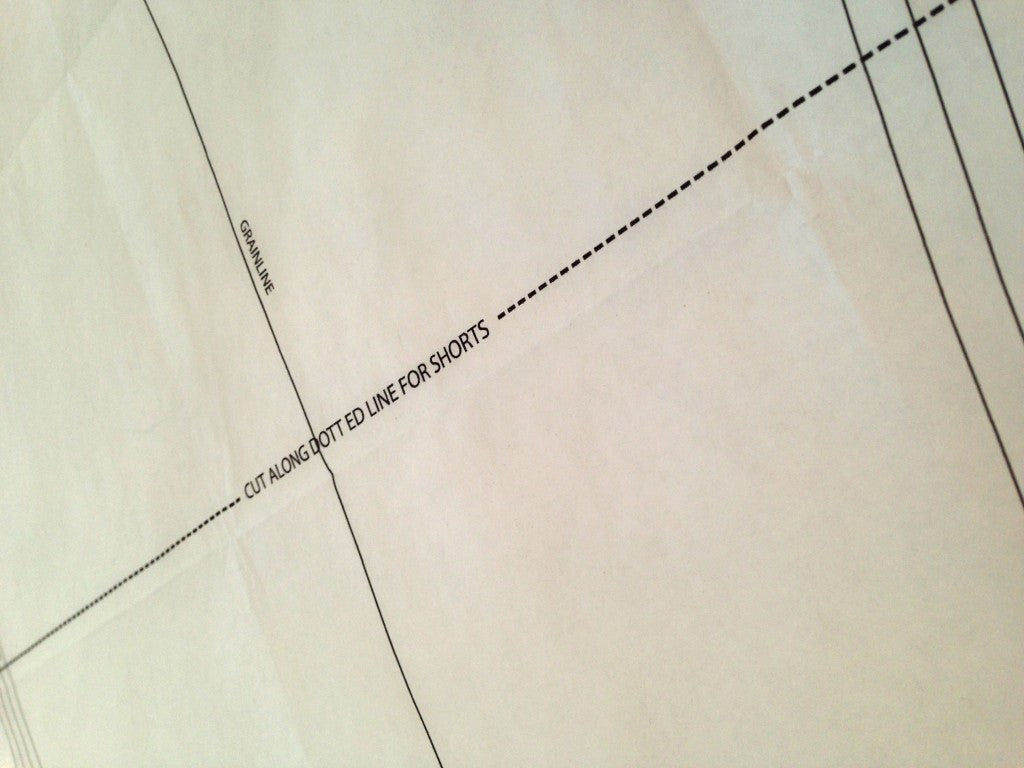We need two measurements for the Ultimate Trousers: waist and hips.
Make sure you're not wearing anything bulky when you're measuring yourself - for most accurate results you might like to do this step in just your underwear.
When holding the tape measure around yourself you want it to be fairly snug against your body. Holding it too tight or too loose will give you an inaccurate measurement. Aim to fit a couple of fingers between your body and the tape, but nothing more. And we know this sounds obvious, but don't be tempted to hold in your tummy - after all the effort you've put into making yourself the perfect fitting pair of trousers, you don't want to end up with something that you can't wear.

The Ultimate Trousers are designed to fit two inches below your natural waist. This measurement is called your lower waist. Find your waist measurement first: it's usually the smallest part of your torso, and the point from which you can bend sideways. Hold the tape measure around yourself, have a little wiggle, and it should find its way into the right spot. Once you have found your waist, measure down 2 inches from this point and measure around yourself again. Make sure the tape measure is level all the way around your body. This will give you your lower waist measurement. Remember, no breathing in!
For your hip measurement you want to hold the tape measure around the fullest part of your bottom. This is not necessarily the fullest part of your thighs when looking at yourself from the front, so it's a good idea to stand sideways next to the mirror to see if you are holding the tape measure in the right place.
Using these two measurements, work out your size. If you are in between sizes, go for the larger one. It's easier to take in your seams than it is to let them out.
The Ultimate Trousers are one of the simplest pairs of trousers you can make. They are made up of four pieces: a front leg, a back leg, a front facing, and a back facing.
We need to cut two front leg pieces and two back pieces. The facing pieces will be cut on the fold.
Making very sure to follow the right line for your size, cut out your patterns. If you are making the shorts version, cut along the dotted line half way down the trouser leg.

Once you have cut out the pattern we need to prepare the fabric for cutting. First off, give your fabric a really good press to get any wrinkles out. Use lots of steam, as this will help eliminate any further shrinkage when you wash your finished trousers. Then, fold your fabric selvedge to selvedge, right sides together and give it a gentle press down the fold to help the fabric sit flat.

You can give your paper pieces a quick iron now too. Use a low heat with no steam to get the creases out, and then lay them on your fabric, following the layout plans shown below.

If you are using fabric which has a nap, such as corduroy or velvet, you will need to make sure you lay the pattern pieces out facing the same direction. The same applies for one-directional prints.
Remember to follow the grainline when you lay out your pieces. The grainline on the pattern should be parallel to the selvedge of the fabric. Don't forget your facing pieces need to be on the fold.

Pin your pieces onto your fabric, and once they are all secure, you can begin cutting them out. Keeping the scissors to the right of the paper, use long confident snips to cut all the way around the pattern.
When this is done, we're going to snip the notches around the edges of the pattern. Notches are really important in dressmaking because they help you to line up the correct pieces before you sew them. If the notches don't match, don't sew! Always go back and double check.